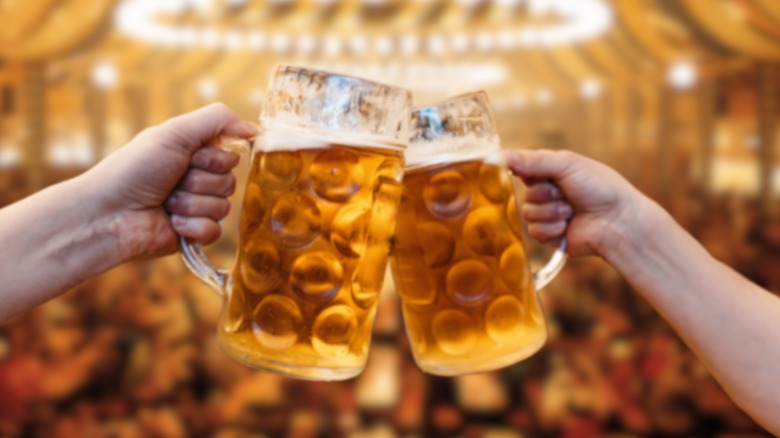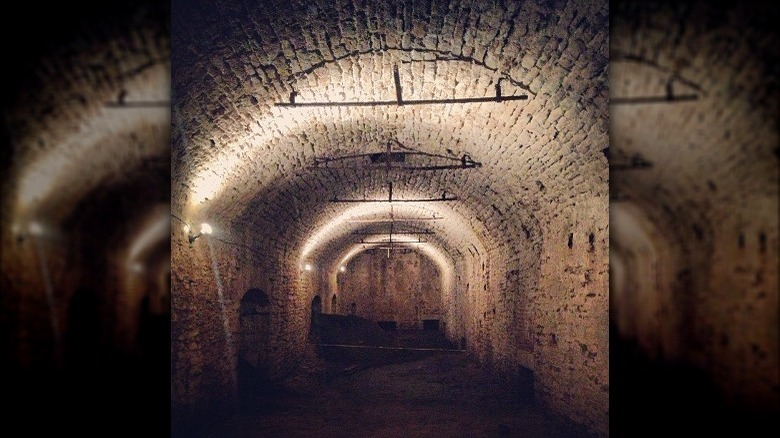The US City With The Largest Oktoberfest
The first Oktoberfest was a horse race held in Munich in 1810 to celebrate the marriage of the German Crown Prince Ludwig. By 1850, it took the shape of the festival we know today. Around that time, immigrants from Germany began flooding into the United States, many of whom settled in a region known as the German Belt in the upper Midwest, spanning from Massachusetts to Minnesota. In 1861, the first American Oktoberfest was held in La Crosse, Wisconsin, and in 1976, the Bavarian festival sprung up in Cincinnati, where it would quickly become the largest in the United States and one of the largest in the world outside of Munich itself.
For one long weekend in late September each year, a mile-long section of Cincinnati along the banks of the Ohio River known as Sawyer's Point and Yeatman's Cove transforms for Oktoberfest Zinzinnati to celebrate the city's German heritage. Festivities include the gemütlichkeit games, aka goodwill games, featuring a pretzel toss and beer stein race, the annual "Running of the Wieners," a hilarious spectacle of wiener dogs dressed as wieners running through the streets, and the world's largest chicken dance.
And of course, there are dozens of vendors serving up German (and German-inspired) food, like goetta, a Cincinnati specialty made from steel-cut oats and ground meat, and lots and lots of beer. After all, in addition to being a major hub in the German Belt, Cincinnati is one of the best cities in America for beer lovers. But to see how deep Cincinnati's German legacy really goes, you'll have to head a mile or so up the road ... and up to four stories underground.
Cincinnati's brewing legacy goes deeper than you probably think
Among the German immigrants settling in the United States in the mid-1800s were brewers who brought a new style of beer — lager — to Cincinnati. Lagers have a longer fermentation process than other beers, which means they need to be aged for six to nine months. Cincinnati's breweries had to get creative to find a way to store massive quantities of beer in temperature-controlled conditions while it aged, and so they installed another German innovation — beer caverns.
Beneath the streets of Over the Rhine, known locally as OTR, lies a network of subterranean vaults some 40 feet deep, where Cincinnati's German brewers once stored barrels of aging lager. But Prohibition, two world wars, and modern refrigeration techniques rendered the caverns obsolete, and the once bustling neighborhood of OTR was all but forgotten — except for a brief moment of infamy when it was named one of America's most dangerous districts in 2009, beating out Compton and Los Angeles.
But OTR has experienced a revival in recent years, in part due to the rise of craft brewing. I went to school in Cincinnati from 2007 to 2013, and I remember the moment when OTR's reputation changed, seemingly overnight, into a trendy hipster hot spot. Fortunately, unlike most cities whose brewing infrastructure was destroyed in the age of Prohibition, Cincinnati's caverns are still standing, and some have been unsealed for tourists to visit. If you need to get away from the crowds of Oktoberfest Zinzinnati, hike up the hill to OTR, where you can visit the breweries and experience the city's German heritage for yourself.

